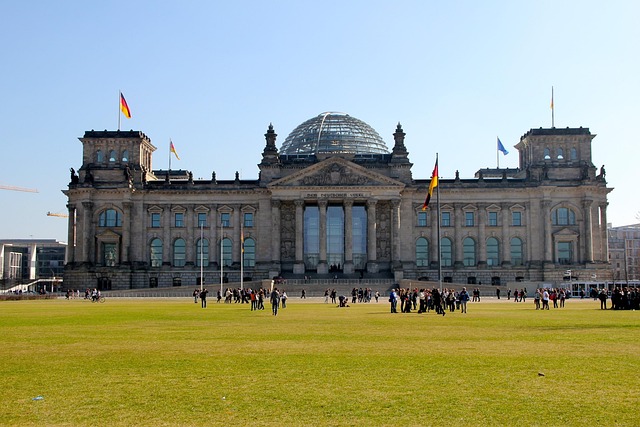Why Travel Subsidies Matter for Economic Recovery
The COVID-19 pandemic brought the world to a standstill, leading to unprecedented economic challenges across the globe. Travel and tourism, vital components of many economies, particularly in developing regions, faced the brunt of these challenges. As nations begin to recover and adapt to new norms, the importance of travel subsidies as a tool for economic recovery is coming into clearer focus. This article delves into why travel subsidies matter in facilitating recovery and reviving both local and global economies.
The Role of Travel and Tourism in Economic Growth
Travel and tourism have historically played crucial roles in economic development. They create jobs, boost local businesses, and stimulate regional and national economies. According to the World Travel & Tourism Council, the travel sector accounted for 10.4% of global GDP and contributed about 319 million jobs worldwide in pre-pandemic years.
Tourism supports various industries, including hospitality, retail, transportation, and cultural sectors. These interconnected industries can lead to a multiplier effect where a single job in tourism can create additional jobs in other sectors. When consumers spend on travel, they indirectly support various service industries, thereby amplifying the economic impact of tourism.
The Impact of the Pandemic on the Travel Industry
The arrival of COVID-19 in early 2020 led to unprecedented restrictions on travel, resulting in a steep decline in tourism. Flights were canceled, hotels shut down, and popular tourist destinations became eerily quiet. The economic ramifications were severe, with many tourism-dependent economies experiencing sudden and massive declines in revenue and job losses.
The International Air Transport Association (IATA) documented that revenues for the airline industry dropped by more than 60%, with broader implications for affiliated industries such as hotels, restaurants, and attractions. Countries with high tourism dependence—especially small island nations or regions reliant on seasonal tourism—faced devastating losses, with many businesses poised on the brink of collapse.
Understanding Travel Subsidies
Travel subsidies refer to financial assistance provided by the government or other entities to support the travel industry and encourage consumer spending on travel-related activities. These subsidies can come in various forms, such as discounts on airfare, accommodation grants, or vouchers for local attractions. The aim is to stimulate demand within the travel sector and promote regional tourism.
Travel subsidies can target different demographics, encouraging families to take vacations, incentivizing locals to explore their regions, or attracting international tourists. By lowering the financial barriers associated with traveling, subsidies can stimulate greater participation and foster a sense of safety and affordability in both domestic and international travel.
Fostering Economic Recovery through Travel Subsidies
As countries embark on their economic recovery journeys, travel subsidies are gaining increasing recognition for the pivotal role they can play. Here are several ways in which these subsidies can support recovery efforts:
Stimulating Immediate Consumer Spending
Travel subsidies can provide an immediate boost to consumer confidence and spending. By lowering travel costs, governments can encourage people to spend money that might otherwise remain stagnant. When consumers take vacations or engage in travel-related activities, they contribute directly to local economies. Restaurants, attractions, and retail businesses benefit from an uptick in customers, leading to job retention and even new job creation.
Supporting Struggling Businesses
Many travel-related businesses faced immense challenges during the pandemic. Subsidies can offer much-needed cash flow to struggling hotels, restaurants, tourism operators, and travel agencies. This financial support can help cover fixed costs, pay employees, and keep businesses afloat until travel demand stabilizes. Moreover, by promoting local tourism, governments can further support enterprises that were unable to operate during lockdowns.
Encouraging Safe Travel Practices
With heightened concerns about health and safety, travel subsidies can be tied to initiatives that promote safe travel. Governments can partner with businesses to enhance health protocols, thereby reassuring travelers that their safety is prioritized. This can have a compounding effect, as confidence in the safety of travel can encourage more people to embark on trips, further driving demand.
Facilitating Employment Opportunities
The travel and tourism industry is labor-intensive. By stimulating demand through subsidies, more jobs can be created—both directly in travel-related sectors and indirectly in supporting industries. Economic recovery in tourism can subsequently lead to enhanced employment rates, allowing displaced workers to re-enter the economy and regain their livelihoods.
Promoting Domestic Tourism
With international travel restrictions still in place or travelers hesitant to fly abroad, domestic tourism presents an immediate opportunity for economic recovery. Travel subsidies targeting local attractions and services can stimulate interest in exploring one’s own country. By encouraging citizens to visit areas they may not typically explore, domestic tourism can create a more sustainable economic model while maintaining revenue for local businesses.
Enhancing Destination Marketing
Travel subsidies can also be leveraged as part of marketing campaigns to revive interest in various destinations. Governments can collaborate with tourism boards to create initiatives that promote the uniqueness and appeal of different regions, making them more attractive to potential visitors. This marketing can be particularly effective when tied to subsidies, helping potential travelers to perceive a journey as financially attainable.
Success Stories and International Examples
Various countries and regions have implemented travel subsidies effectively to stimulate recovery. For example, in Australia, the government introduced several initiatives aimed at boosting domestic tourism, such as discounted airfares for selected routes and grants for state-level tourism initiatives. The response from consumers was positive, with many taking advantage of the subsidies to explore local destinations.
Similarly, Singapore launched a tourism voucher program that incentivized residents to visit local attractions and dine at participating restaurants. As a result, local businesses experienced a revival in customer engagement. Other nations, from Japan to Portugal, have also introduced travel subsidy initiatives tailored to their specific economic contexts and regional needs.
Challenges and Considerations
While travel subsidies represent an important tool for facilitating economic recovery, there are also challenges and considerations that need to be addressed. Careful planning and execution are paramount in ensuring that subsidies effectively achieve their intended goals.
Potential for Market Distortion
Subsidies may inadvertently distort market dynamics, making it difficult for businesses that do not qualify for financial support to compete. Striking a balance between providing necessary assistance and maintaining a level playing field for all industry players is essential.
Long-term Viability and Sustainability
Travel subsidies require substantial funding, and long-term economic sustainability necessitates careful consideration. Policymakers must ensure that the investment is justified by real and lasting economic gains. Sustaining travel recovery efforts while transitioning to a post-subsidy framework will be integral for lasting benefits.
Equity and Access
Care must also be taken to ensure that travel subsidies reach diverse populations rather than just specific demographics. Equitable access to travel opportunities allows for a richer and more diverse tourism landscape, which benefits all stakeholders involved.
Conclusion
As recovery efforts gather momentum, the significance of travel subsidies cannot be overstated. By facilitating consumer spending, supporting struggling businesses, promoting domestic tourism, and rejuvenating the overall economy, travel subsidies serve as vital mechanisms for recovery. However, effective implementation requires careful consideration of the challenges and potential pitfalls that may arise.
Travel subsidies represent more than just economic assistance; they embody hope and the promise of economic renewal. Policymakers, businesses, and communities must collaborate to ensure that the benefits of travel recovery are inclusive and sustainable, paving the way for a revitalized tourism sector that can withstand future challenges. As the world emerges from the shadows of the pandemic, the role of travel subsidies will remain pivotal in the quest for a prosperous economic future.










